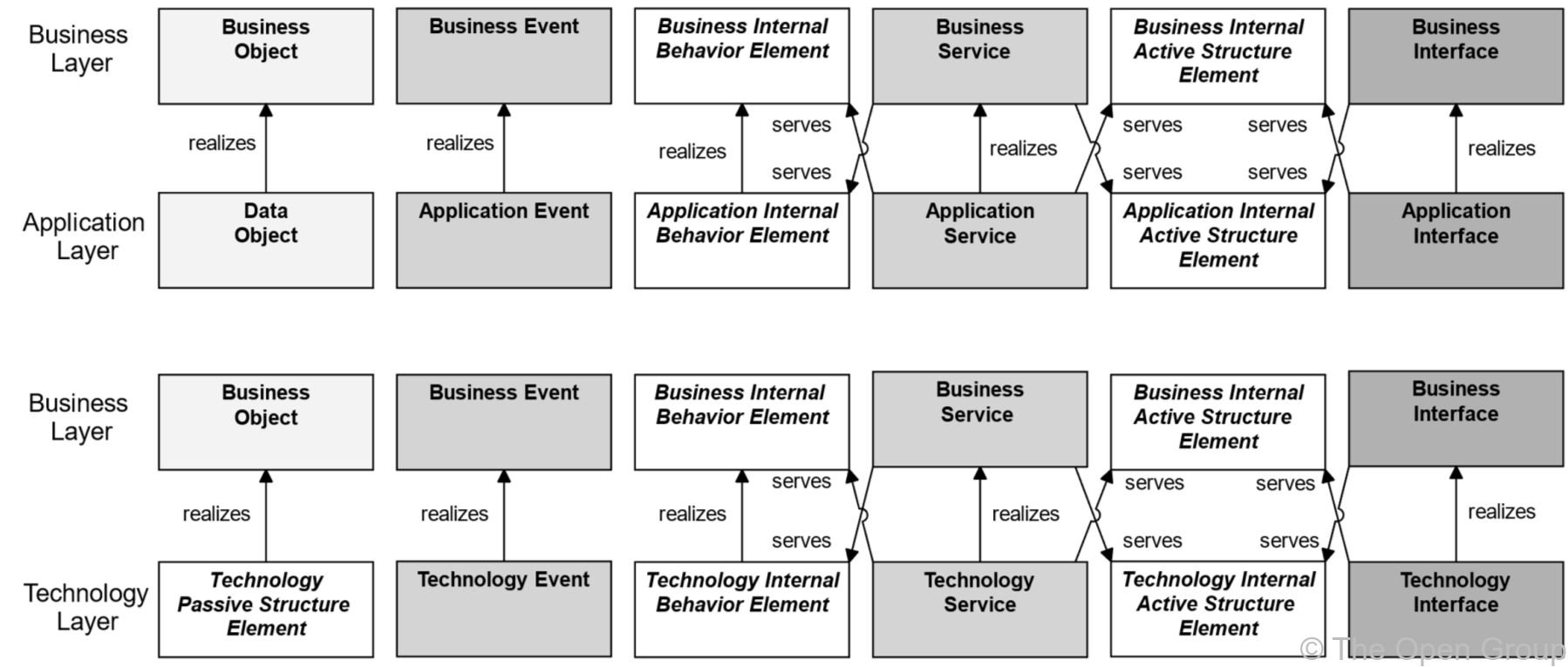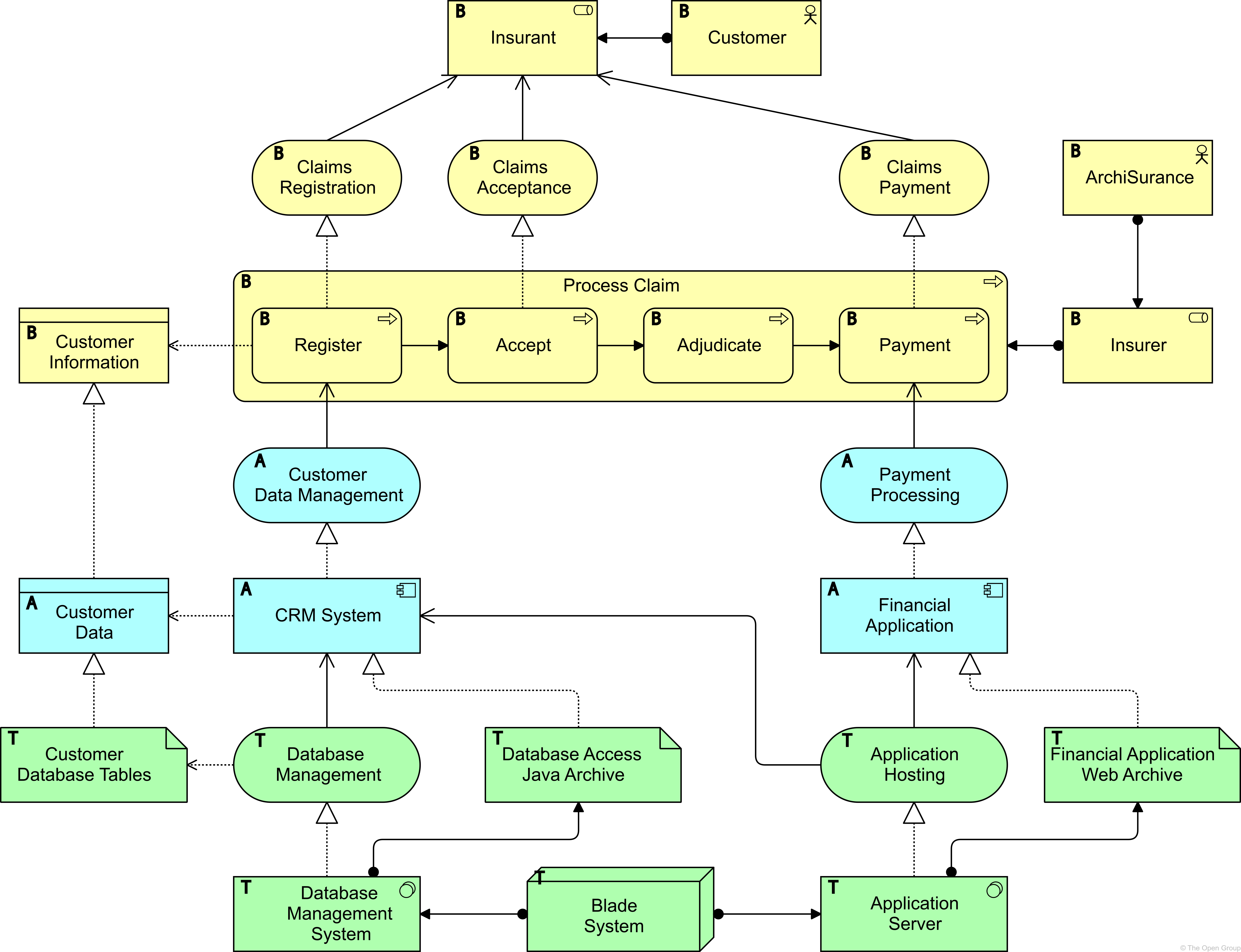11. Relationships Between Core Layers
The previous chapters have presented the concepts to model the Business, Application, and Technology Layers of an enterprise. However, a central issue in Enterprise Architecture is business-IT alignment: how can these layers be matched? This chapter describes the relationships that the ArchiMate language offers to model the link between business, applications, and technology.
11.1. Alignment of the Business Layer and Lower Layers
Figure 104 shows the relationships between the Business Layer, the Application Layer, and the Technology Layer elements. There are two main types of relationships between these layers:
-
Serving relationships; for example, between application service and the different types of business behavior elements, and between application interface and business role; vice versa, serving relationships between business service and application behavior elements, and between business interface and application component. These relationships represent the behavioral and structural aspects of the support of the business by applications.
-
Realization relationships; for example, from an application process or function to a business process or function, or from a data object or a technology passive structure element to a business object, to indicate that the data object is a digital representation of the corresponding business object, or the technology element is a physical representation of the business object. Note that there is no realization of business internal active structure elements by application or technology elements because people cannot be realized by applications or technology. Instead, the business behavior of those active structure elements can be realized by application or technology behavior elements, to which in turn application or technology active structure elements can be assigned.
In addition, there may be an aggregation relationship between a product and an application or technology service, and a data or technology passive structure element, to indicate that these services or objects can be offered directly to a customer as part of the product.

|
Note
|
This figure does not show all permitted relationships; there are indirect relationships that can be derived, as explained in Section 5.7. |
11.2. Alignment of the Application and Technology Layers
Figure 105 shows the relationships between Application Layer and Technology Layer elements. There are two types of relationships between these layers:
-
Serving relationships, between technology service and the different types of application behavior elements, and between technology interface and application component; vice versa, serving relationships between application service and technology behavior, and application interface and technology internal active structure element. These relationships represent the behavioral and structural aspects of the use of technology infrastructure by applications and vice versa.
-
Realization relationships from technology process or function to application process or function, from artifact to data object, to indicate that the data object is realized by, for example, a physical data file, from artifact to application component, to indicate that a physical data file is an executable that realizes an application or part of an application. (NOTE: In this case, an artifact represents a “physical” component that is deployed on a device or system software element; this is modeled with an assignment relationship. A (logical) application component is realized by an artifact and, indirectly, by the element on which the artifact is deployed.)

|
Note
|
This figure does not show all permitted relationships; there are indirect relationships that can be derived, as explained in Section 5.7. |
Due to the derived relationships that are explained in Section 5.7, it is also possible to draw relationships directly between the Business and Technology Layers. For example, if a business object is realized by a data object, which in turn is realized by an artifact, this artifact indirectly realizes the business object.
11.3. Example
